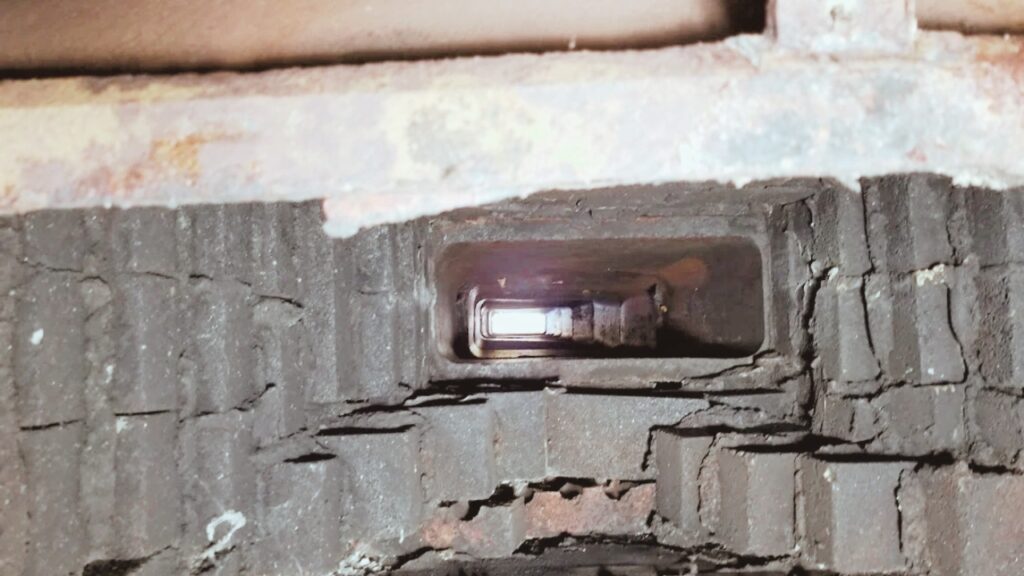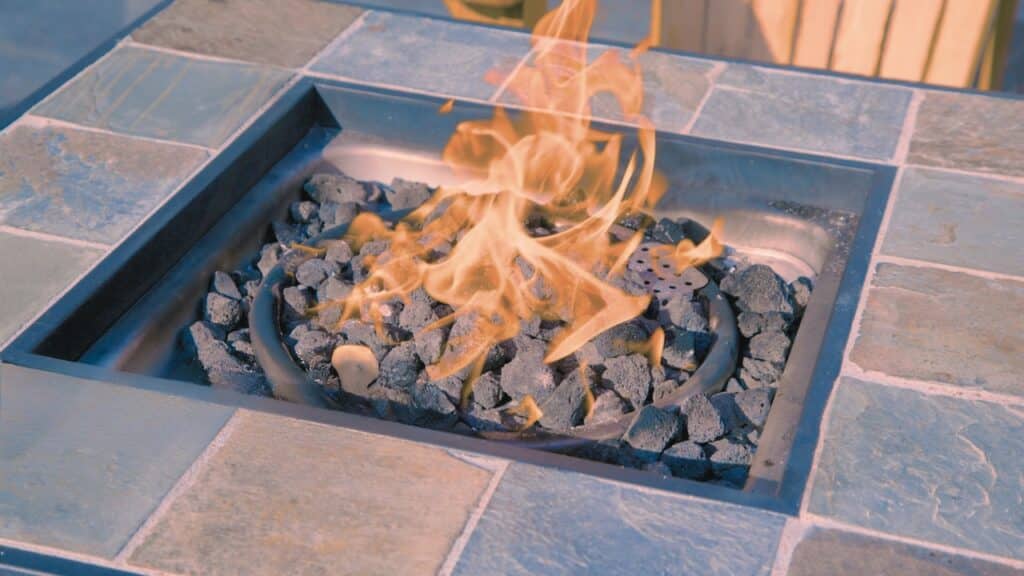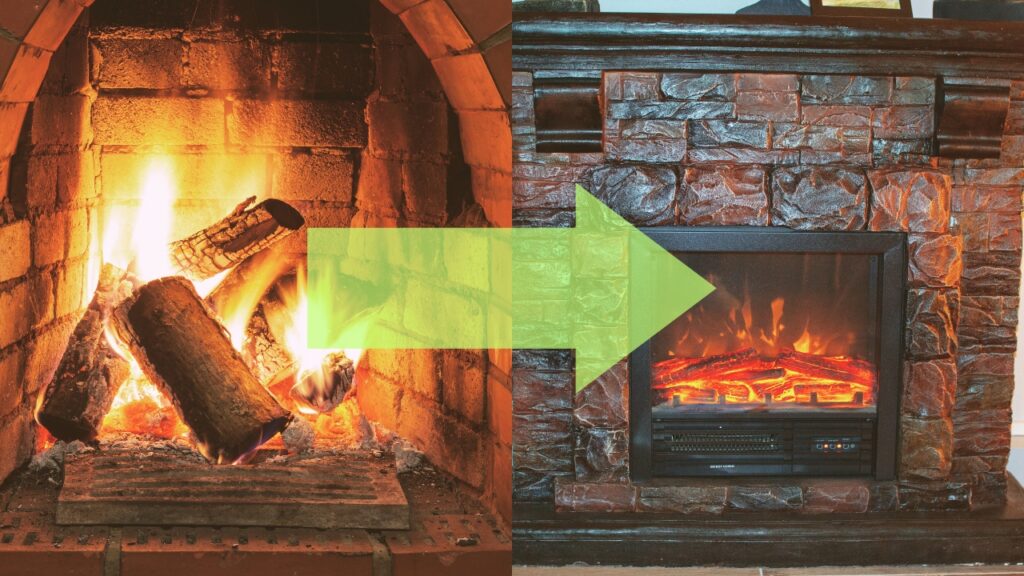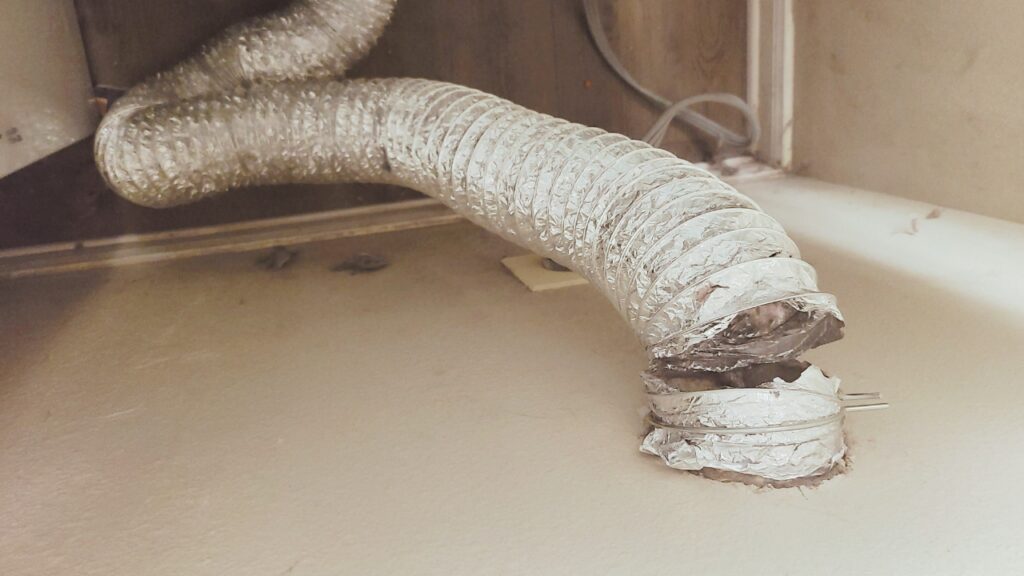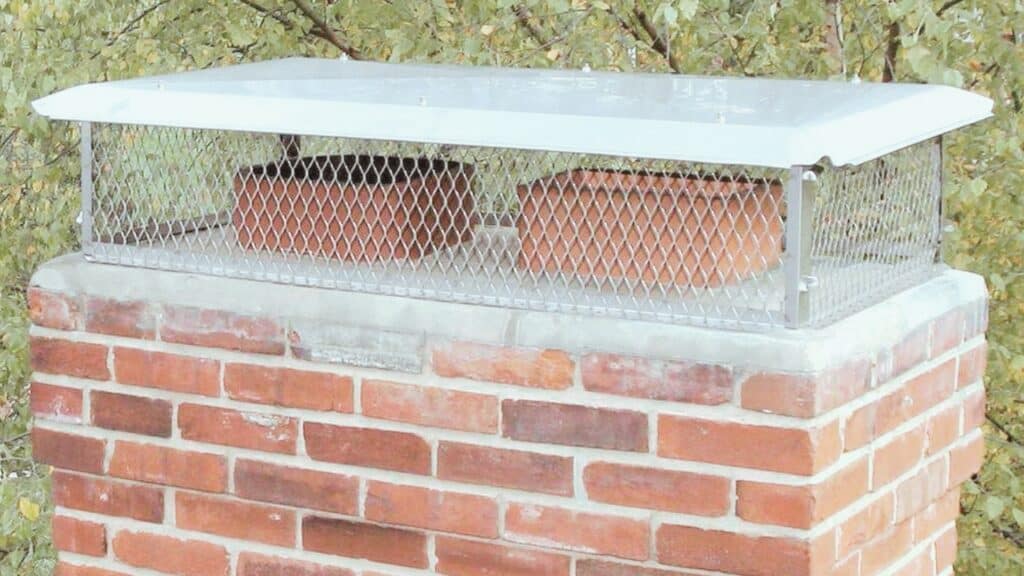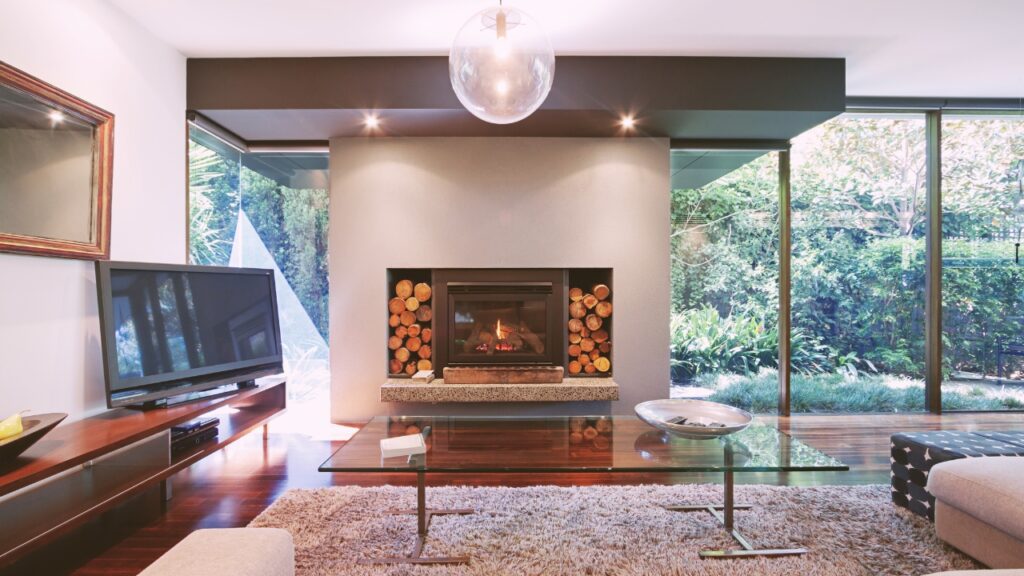When most homeowners think of their chimney, they only picture the part that sticks out of the roof.
But, there’s more to a chimney than meets the eye.
In fact, the entire system is made up of several parts, one of which is called a chimney rain pan. This little-known component plays a vital role in your chimney’s safety and function.
In this post, we will talk about the functions of a chimney pan and how much it costs to replace it.
What is a chimney pan cover?
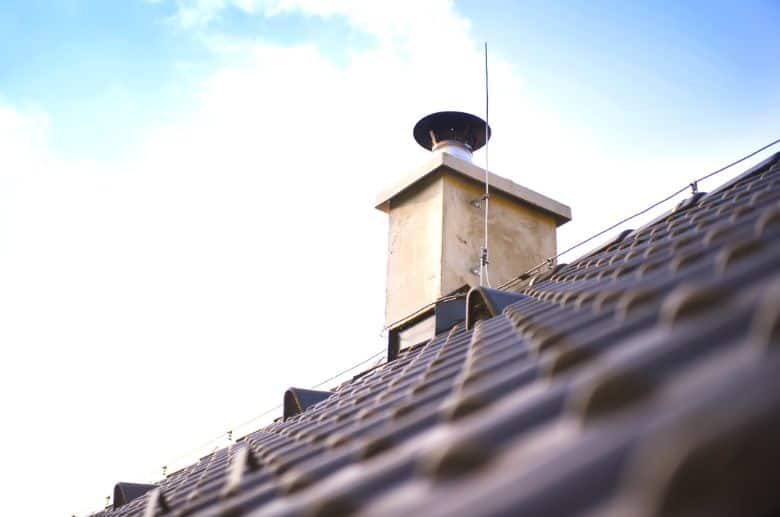
It is a flashing used externally on the chimney to divert rainwater away from the chimney flue while allowing smoke to escape from the fireplace.
A chimney pan cover performs the same function as a chimney crown only that it is made of metal instead of concrete. It prevents water that runs off the chimney cap from getting into the masonry and causing damage.
It is important to note that a chimney pan cover is more water-resistant than a crown in masonry chimneys.
Chimney pans are made of metals like galvanized steel, stainless steel and copper and are typically installed on top of the chase in prefabricated chimneys.
They have a hole at the top to allow the escape of smoke from the fireplace through the flue pipe. This hole also allows the installation of the chimney cap. A chimney cap covers the top of the flue pipe and prevents water and debris from entering the chimney. It also has a mesh to keep animals like rats away from your chimney.
Your chimney pan should have cross bends to create a slope that helps drain rainwater easily.
How to properly install a chimney rain pan
A chimney pan can serve you for many years.
However, if you don’t install it properly, it will get damaged within a short time and you will have to pay a chimney sweep to repair or replace it.
Here are some tips on installing a chimney pan correctly:
Step 1: Ensure that the chimney rain pan is the right size – You can find the pans in your local sheet metal shops or request one from a chimney sweep. Ideally, it should be custom-made to fit well. Use a tape measure to find the length and width of the chase top.
Step 2: Install support bracing – Install arches across the top of the chimney before placing the chimney rain pan. The bracing should be around an inch and a half higher in the middle than on the edges. This will ensure rain water doesn’t settle on the pan in the future and cause rusting.
Step 3: Fitting the chimney pan. Ensure the pan fits properly on the siding. Remember, the sides should be on the outside of the siding, stucco or brick to ensure water doesn’t get into your chimney.
Step 4: Once you have fitted the rain pan, nail it. Nail it on the sides because nailing the top of the rain pain leads to water leaks which will eventually damage other parts of the chimney.
Step 5: You can install the chimney cap back on if you had removed it to place the chimney rain pan.
Sometimes, a chimney shroud (decorative cover) is installed on top of the chimney pan to hide the chimney pipe.
Why chimney rain pans are necessary?
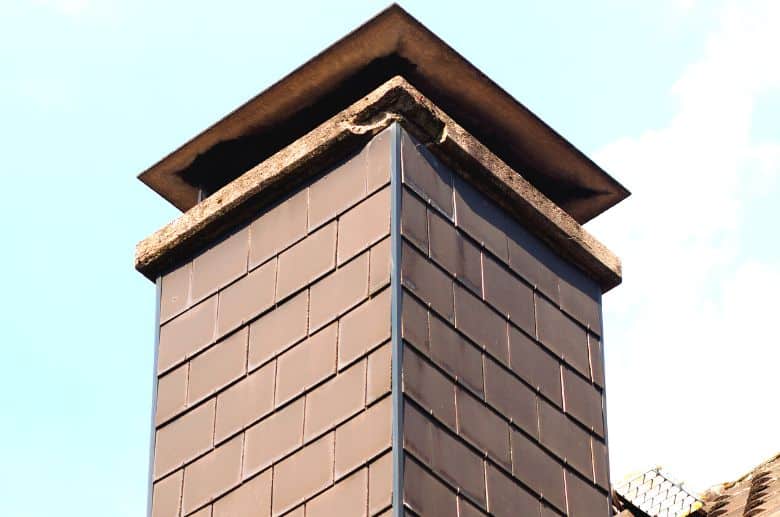
Chimney rain pans are an important component of prefabricated chimneys. They prevent rain from entering the chimney.
They serve the same function as chimney crowns in masonry chimneys. Unlike chimney crowns, rain pans are made of metal.
Keeping the rain out of your chimney is crucial. When the rain pan leaks water, it creates a moisture-rich environment that causes rusting of chimney components such as the flue pipe and the firebox.
This can lead to costly chimney water leak repairs. For example, water leaks can lead to corrosion and deterioration of chimney parts like the damper. If you ignore these water damage issues for a long time, you may be forced to replace the whole prefab chimney unit.
Call a chimney sweep immediately for an inspection if you hear water dripping down your chimney or see signs of rusting.
——
Do You Need to Hire Chimney & Fireplace Expert?
Get free quotes from qualified experts near you. No commitment required!
——
Do chimney chase pan need to be cleaned?
It would be best if you cleaned the chimney chase pan frequently. Chimney chase pans are typically exposed to weather elements such as rain and snow.
Also, dirt, stains and debris can accumulate on the chase pan over time and this can cause its deterioration, leading to water leaks. The rain pan should be made from metals that don’t rust such as stainless steel and aluminum.
Routine cleaning by a professional chimney sweep ensures that the chase pan is in great condition and lasts long.
What’s the difference between a chimney pan and a chimney cap?
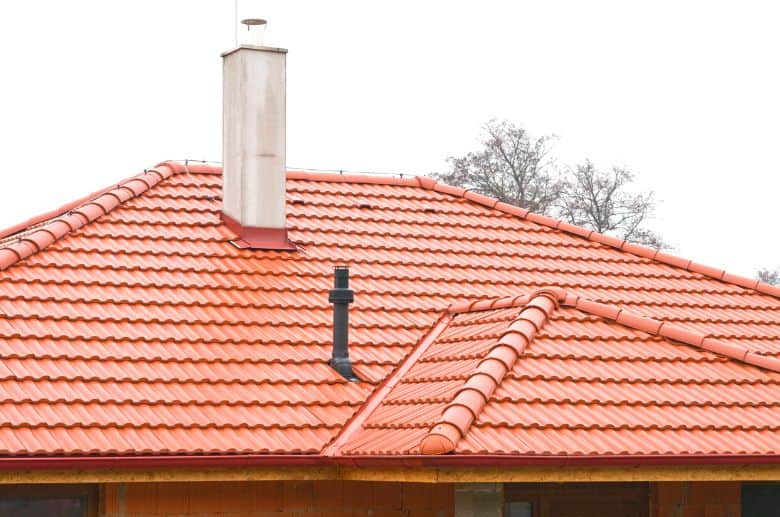
Many homeowners can’t tell the difference between a chimney pan and a chimney cap. This is why we’re here to clear things up.
A chimney pan is a rectangular metal sheet that covers the top of the siding.
It has a hole in the middle to allow smoke and gas to escape through the flue pipe.
On the other hand, the chimney cap is usually installed on top of the flue pipe. The chimney cap provides the following functions:
Keeps animals away– Animals like squirrels, rats, raccoons and bats can easily access the inside of the chimney through the flue pipe. The constant moving in and out of the chimney can cause damage to chimney components. These animals will also leave their droppings inside the chimney, causing unpleasant smells. Most chimney caps typically have mesh sidings to ensure rodents and other animals don’t get inside your chimney. The mesh also prevents leaves and debris from entering the chimney.
Protect the chimney from water leaks -The chimney rain pan does not cover the flue pipe. The chimney cap covers it while allowing smoke and gasses to escape.
Prevent fires – Sometimes, sparks in the fireplace can move up the flue pipe and set your roof on fire. A chimney cap controls these sparks and ensures that a fire that can cause significant damage doesn’t start.
Prevent downdrafts – Downdrafts can occur when cold air is pushed through the flue pipe into the fireplace. This reduces the warmth created by your fireplace. In addition, it can push smoke and dangerous gasses like carbon monoxide into your house. A chimney cap ensures cold air doesn’t get into the chimney even when there are strong winds.
——
Do You Need to Hire Chimney & Fireplace Expert?
Get free quotes from qualified experts near you. No commitment required!
——
How Long Does a Chimney Rain Pan last?
The lifespan of your rain pan depends on several factors like, the material that its made of, weather conditions in your area, level of maintenance and if it was installed properly.
Take galvanized steel and aluminum pans, for example. These are known for their durability, but they may start to rust after about 5 to 10 years. Conversely, stainless steel and copper are the top contenders for durability. A high-quality chimney rain pan made of stainless steel or copper could potentially last a lifetime, provided it is well-maintained and cared for
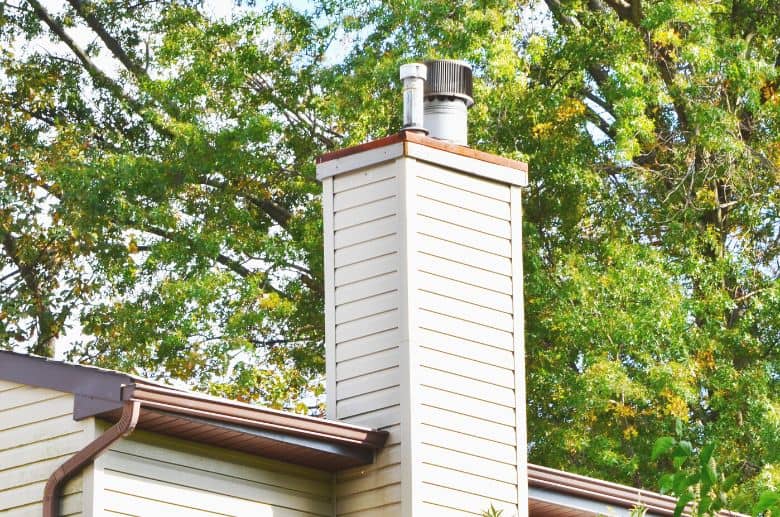
Chimney pan replacement cost
The cost of replacing your chimney pan is $200-$700. When replacing your chimney pan, you should check other parts of the chimney as well.
A reputable chimney sweep will thoroughly inspect your chimney to ensure everything is working well.
Conclusion
Installing a chimney rain pan is one of the best decisions you can make this year. It not only prevents rainwater from entering your chimney but also ensures your fireplace works efficiently. Get in touch with a professional chimney sweep if you want to replace or install a rain pan.

